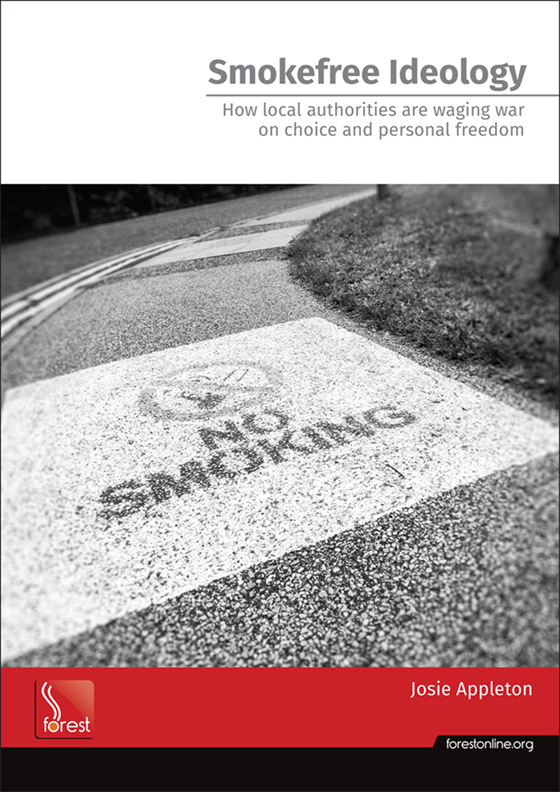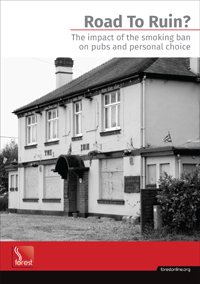Last year, on the morning of the UEFA Women's Euro final between England and Germany at Wembley, I wrote:
Football? It’s a woman’s world now
As most people know, England won that match and tomorrow they play Spain in the final of the FIFA Women’s World Cup in Australia.
Whatever the result, it’s an extraordinary achievement for England’s women to reach back-to-back finals, especially when you take into account the loss of five players from the Euro winning team to long-term injury or retirement.
Given the rapid development of the women’s game worldwide, it’s also a feat that will be very difficult to repeat, or improve upon, so enjoy the moment because it may never happen again.
Indeed, the days when two countries (the USA and Germany) were able to dominate the international women’s game, winning tournament after tournament at world or European level, are almost certainly over.
That said, given their dominance at youth level in recent years, it’s possible that Spain (England's opponents tomorrow) could prove me wrong.
What interests me though is the stubborn refusal of many football supporters (mostly men) to watch or follow the women's game, even the World Cup.
A Fulham season ticket holder (whose blog I enjoy reading) gave his reason in a recent post. Commenting on an argument he’d had with a friend, he wrote:
I mentioned how irritated I was by the way women’s football is being forced on us by our clubs and the media. There are pages of it in my daily paper, which I swipe by as quickly as articles about tennis.
My own club relentlessly promotes its women’s team, when the difference in attendances and ticket prices confirms that nothing has changed — except for yet another political drive to make us all pretend something is true that isn’t …
I know what he's saying but it still surprises me that, as a football supporter, he has no interest in the woman's game.
A reader shared his lack of enthusiasm but for a different reason:
When we watch many sports, we admire those players that have the power, pace and or skill to do things we (and other competitors) generally can’t. Women’s football at present is much slower, less skilful and lacks the power of the men’s game. This is true for most (all) women’s sports. As a consequence I find it so much less enjoyable to watch, so I don’t bother.
Fair enough, but had they watched the England-Australia game I think they would have been pleasantly surprised. I particularly enjoyed this comment on England’s performance that was posted on the ABC website:
Hovering around on the edge of fair play, pushing physicality to the legal limit, snatching seconds away from your opponent and taking your chances; it's what every fan wants their team to do.
Spot on. Furthermore, I defy any football supporter not to have been gripped, and entertained, by what they were watching.
For 60 minutes, in a stadium packed with almost 75,000 Australians, England were comfortably the better team and deservedly a goal up.
The goal, I should add, was an extremely well taken strike by Ella Toone whose chip over the German keeper in the Euro final, whilst running at pace, was one of the most glorious, and skilful, things I have seen on a football pitch ever, regardless of gender.
Until she scored against Australia, Toone had had a rather anonymous World Cup. She lost her place in the starting team during the group stage to Lauren James, England’s rising young star, who went on to score three goals, and assist in another three, before being sent off against Nigeria, a game England won on penalties.
The decisive penalty in that game was taken by Chloe Kelly whose shot was recorded – according to data from the official match ball and reported by the Guardian – as reaching 'a speed of 69mph, beating the most powerful strike of the 2022-23 Premier League campaign, by West Ham’s Saïd Benrahma, that clocked in at 66.6mph'.
That's the men's Premier League, by the way.
But I digress.
After James was suspended for two matches, Toone was brought back for the quarter final and semi final, but her strike against Australia, good as it was, wasn't even the best goal of the game.
That fell to Australia’s Sam Kerr, one of the top female strikers in the world (she plays for Chelsea) who missed the group stage because of a calf injury and didn’t start a match until the semi-final.
With England in control and dominating possession, Kerr received the ball inside her own half, in space, which allowed her to turn and run at her Chelsea teammate, the England captain Millie Bright, before shooting, and scoring, from 25 yards.
There are some, no doubt, who will say that an average male goalkeeper would have saved it, but that wouldn’t do justice to the shot, the execution, or the extraordinary theatre of the moment.
At that point many teams in England’s position would have collapsed, mentally. I’ve seen momentum change hundreds of times in football matches, sometimes due to cruel bad luck, but despite enduring a tough few minutes when Australia might have scored again, it was the home team who blinked, a defensive error leading to a second England goal, followed by a third a few minutes from time.
Regardless of gender, this was sport at its competitive best.
No-one is arguing that the men’s game isn’t quicker, more physical, or, at the top level, more skilful than the women’s game.
But that doesn’t make the women’s game, at World Cup level, any less enjoyable.
For example, when I watched Chelsea play Liverpool on the opening weekend of the Premier League last Sunday, the greater speed, athleticism and physicality of the men was immediately obvious compared to what I’d been watching in the Women's World Cup.
The first touch of the Premier League players was noticeably better too.
But did I enjoy the Premier League game more than the England-Australia match? No, I didn't. In competitive terms they were equally watchable.
And the drama was greater in the women's match because it was a World Cup semi-final with a capacity crowd of 75,000 compared to the 42,000 at Stamford Bridge.
What I also love are the frequently unguarded interviews given by England’s women players, a highlight of which was midfielder Georgia Stanway cheerfully telling the assembled press, “Sometimes you don't realise that your head coach is actually human.”
Serina Wiegman, England's Dutch coach, was sitting a few feet away with an amused smile on her face.
Sadly, I suspect that much of that unfettered joy, bordering on naivety, will be knocked out of future generations of female pros so, again, enjoy it while it lasts.
I agree that the women’s game can be over-hyped (by the BBC especially) but the same is true of just about every sport, regardless of gender.
The Premier League? The Six Nations? Wimbledon? Give me strength (no pun intended).
The growth of women’s football ought to interest anyone with a genuine passion for the game. And if the Women's World Cup final doesn’t, at the very least, pique your curiosity … well, I’d have to seriously question your commitment.
That said, spare me the johnny-come-latelies - including countless journalists - who have suddenly woken up to the women’s game and are boring everyone to tears with their thoughts on England’s progress.
This includes ‘advice’ on tactics and substitutions, conveniently ignoring the fact that, since Wiegman was appointed England’s head coach in 2021, the team has lost just once in 38 games, and tomorrow will be her fourth major final in succession, including two as coach of the Netherlands.
Yes, she really needs your help and ‘expertise’, lads. (And, yes, it’s usually men.)
Which brings me to the issue of pay. According to the Guardian (who else?), ‘Sarina Wiegman should be paid the same as Gareth Southgate for England job’.
Wiegman is said to earn £400,000 a year, less than a tenth of Gareth Southgate’s salary for managing the England men’s team.
If the USA (now looking for a new head coach) wants to double, triple or quadruple Wiegman’s salary, good luck to them, and good luck to her if she was to accept such an offer, although she says she’s happy in her current job.
The problem is, if the salary of the women’s head coach is increased to match that of her counterpart in the men's game, what about the players? Should they be paid the same as the men as well?
And here I come back to something the Chelsea midfielder Melanie Leupolz said in 2021:
“I don’t think equal pay is appropriate because you have to see what money men bring in and what women bring in.
“What justification do I have to earn millions when on the weekends I play in front of 3,000 people?
“Clubs are making losses for women’s teams. You have to invest now so that women’s football can support itself in a few years and bring in profits.”
Ultimately, this is a question of market forces. To justify equal pay, the women’s game has to generate the same revenue as the men’s game, whether that’s through sponsorship, ticket sales, and so on, and at present it’s a long way from doing that, especially at club level where the top teams are largely subsidised by the men’s teams.
I suspect however that quite soon the wages paid to the top women’s players in England will become more of an issue. It’s happened already in America and Canada where the players demanded equal pay with their male counterparts at international level.
In the US one of the arguments allegedly put forward was that the US Women National Team deserve equal pay because the USWNT has won more World Cups than the men.
But that’s hardly comparing like with like because for many years the competition in women’s football was pitiful compared to the men’s World Cup.
Four years ago in France, for example, the USA beat Thailand 13-0 in their opening game. Thankfully we’ve experienced nothing like that in Australia.
Anyway, following a long dispute, an equal pay deal was reached last year.
In Canada the women’s international team also demanded equal pay and threatened to strike until Canada Soccer agreed to meet their demands.
Coincidentally neither nation has done well in the 2023 Women's World Cup. The Canadians, having won gold at the Olympics in Japan in 2021, didn't even get out of the group stage in Australia, while the USWNT had their least successful World Cup ever.
How much of this was due to money-related tensions and arguments with their respective federations we’ll probably never know, but it can’t have helped.
Let’s hope this likeable England Women’s squad resist making similar demands. I know it’s a short career but the public will love them even more if they keep their feet on the ground.
That will bring its own reward and I can’t imagine them being short of commercial opportunities.
But that debate is for another day. They haven’t actually won the World Cup yet and Spain - who outplayed England for a large part of the Euro quarter final in Brighton last year - are extremely dangerous opponents.
If England overcome them again it will be one of the country’s greatest and most joyful sporting moments. I wouldn’t miss it for the world, and nor should you.
See also: Hate football? Look away now (2011), European Super League? Who cares, my love of football died years ago (2021)

 Sunday, September 3, 2023 at 11:30
Sunday, September 3, 2023 at 11:30 

















